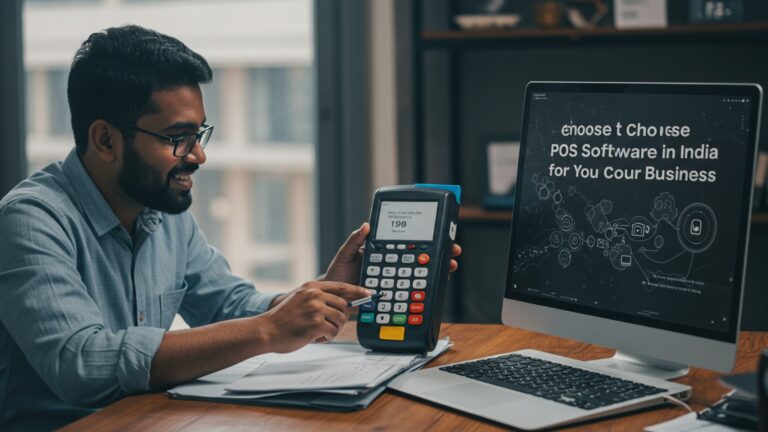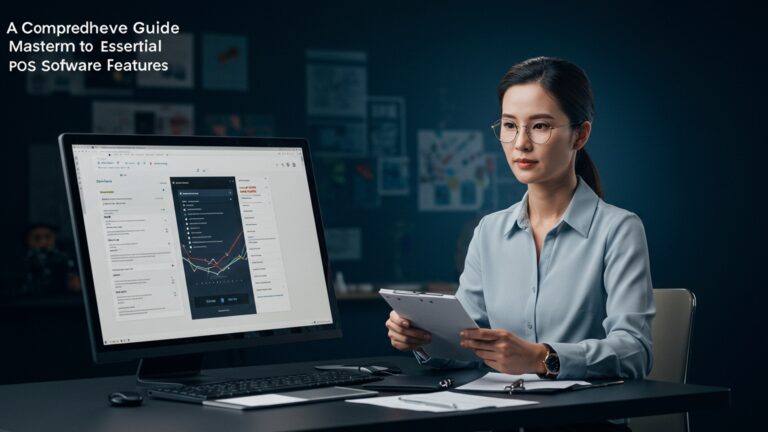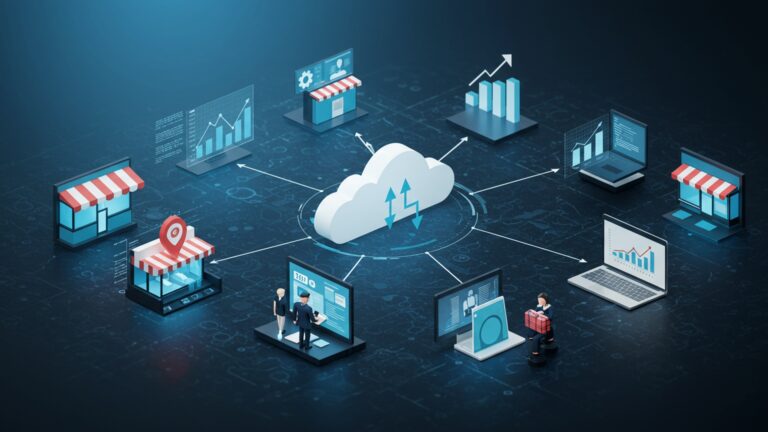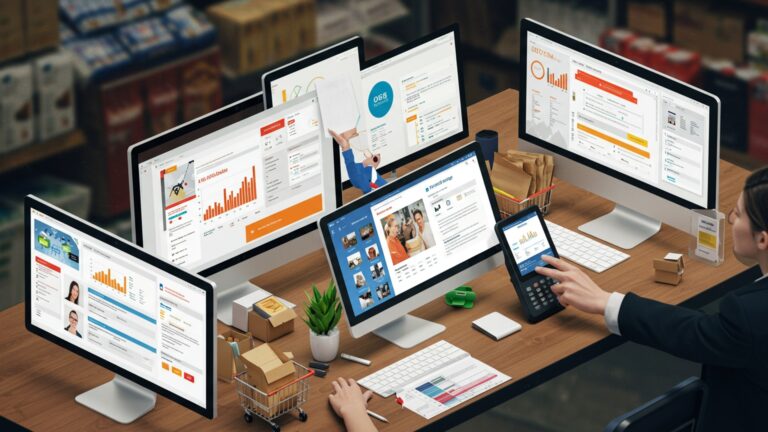Master Mobile POS Software Essential Guide for On-the-Go Business Operations
The modern business landscape demands unparalleled agility, pushing operations beyond traditional brick-and-mortar confines. No longer tethered to a static cash register, entrepreneurs now leverage the power of mobile POS software to execute transactions seamlessly, whether running a pop-up shop, managing a food truck, or offering field services. This transformative technology enables real-time inventory updates, integrates diverse payment methods from tap-to-pay to digital wallets. provides instant sales analytics, all from a smartphone or tablet. As businesses increasingly prioritize cloud-synced data and robust security for every customer interaction, mastering this essential tool becomes critical for optimizing efficiency and enhancing the on-the-go customer experience, driving growth in today’s dynamic market.
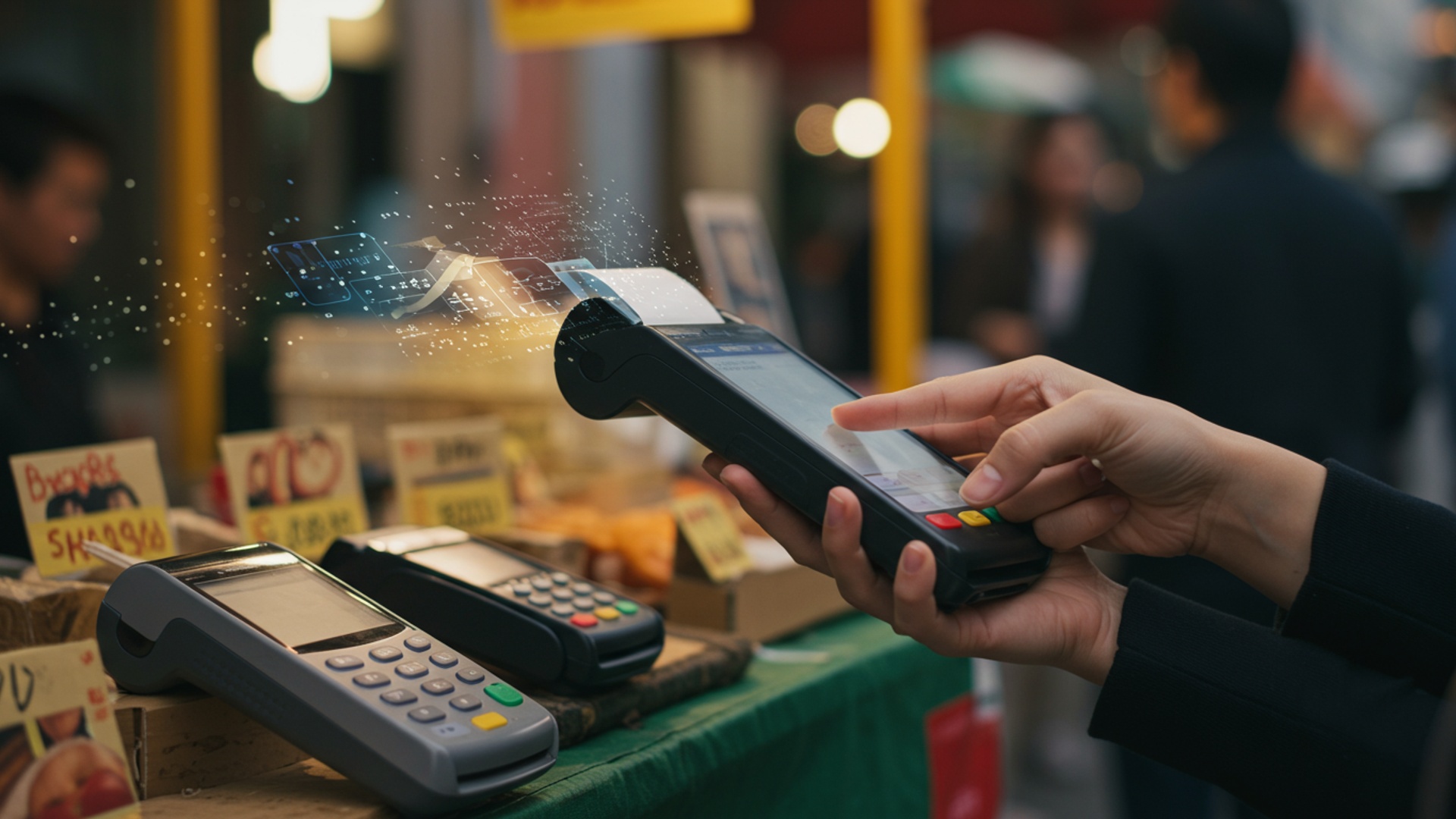
Understanding Mobile POS Software: What It Is and Why It Matters
The landscape of business operations has undergone a significant transformation, with technology driving efficiency and flexibility. At the heart of this evolution for many businesses lies the Point of Sale (POS) system. Traditionally, a POS system was a stationary cash register or a desktop computer setup, confined to a counter. But, with the advent of smartphones and tablets, the POS system has shed its physical constraints, giving rise to mobile POS software.
But what exactly is mobile POS software? In its simplest form, it’s a software application that runs on a portable device, such as a smartphone or tablet, transforming it into a complete sales processing terminal. This allows businesses to accept payments, track sales, manage inventory. even handle customer interactions from virtually anywhere, as long as there’s an internet connection (or even offline capabilities, which we’ll discuss later). It’s a powerful tool that empowers businesses to operate beyond the confines of a traditional storefront, catering to an increasingly on-the-go economy.
The significance of embracing mobile POS software cannot be overstated. For small businesses, it often represents an affordable entry point into sophisticated sales management. For larger enterprises, it offers unparalleled flexibility, enabling staff to serve customers directly on the sales floor, at pop-up events, or even during home service calls. It’s not just about processing transactions; it’s about enhancing the entire customer experience and streamlining back-end operations.
The Core Components of a Mobile POS System
A fully functional mobile POS software system is more than just an app; it’s an ecosystem of integrated hardware and software designed to work seamlessly. Understanding these components is crucial for anyone looking to implement or upgrade their sales infrastructure.
- Software Application
- Portable Hardware
- Tablet or Smartphone
- Card Readers
- Magstripe Readers
- EMV Chip Readers
- NFC Readers (Contactless)
- Receipt Printers
- Barcode Scanners
- Cash Drawers
- Connectivity
- Wi-Fi
- Cellular Data (4G/5G)
- Bluetooth
This is the brain of your mobile POS system. It’s the application installed on your tablet or smartphone that manages sales, inventory, customer data. reports. Modern mobile POS software is often cloud-based, meaning your data is stored securely online and accessible from multiple devices, ensuring real-time updates and backups.
The primary device running the mobile POS software. Devices like iPads, Android tablets, or even high-end smartphones are commonly used due to their portability, touch interfaces. robust processing power.
These are essential for accepting various payment methods. They come in several forms:
For older credit cards, swiping the magnetic stripe.
For enhanced security, requiring customers to insert their chip cards.
For tap-to-pay options like Apple Pay, Google Pay. contactless cards. Many modern readers combine EMV and NFC capabilities.
While digital receipts are common, many businesses still require physical receipts. Portable thermal printers, often connecting via Bluetooth, are ideal for mobile setups.
For quick and accurate product identification, particularly useful in retail or inventory management. Portable Bluetooth scanners integrate easily with mobile POS software.
Though less common in truly mobile setups, some businesses might integrate a compact, Bluetooth-enabled cash drawer for cash transactions.
Reliable internet access is paramount.
The most common form of connectivity, ideal for fixed locations or areas with stable Wi-Fi.
Crucial for truly on-the-go operations, such as food trucks, field services, or outdoor markets.
Used for connecting peripherals like card readers, printers. scanners wirelessly to the main mobile device.
Key Features and Functionalities to Look For
When evaluating mobile POS software, the features it offers can significantly impact your business’s efficiency and growth. A robust system goes beyond just processing payments.
- Inventory Management
- Sales Reporting & Analytics
- Customer Relationship Management (CRM)
- Employee Management
- Payment Processing
- Offline Capabilities
- Multi-Location Support
This is a cornerstone feature. Good mobile POS software should allow you to track stock levels in real-time, receive low-stock alerts, manage product variations (size, color). even handle returns and exchanges with ease. For instance, a small boutique owner using mobile POS software can instantly check if a specific item is in stock at another location or if it needs to be reordered, preventing lost sales.
Understanding your sales performance is vital. The software should provide detailed reports on sales trends, popular products, peak selling times. employee performance. These insights enable data-driven decisions, helping you optimize inventory, staffing. marketing strategies. Imagine being able to see, directly from your tablet, which menu items are selling best during a lunch rush at your food truck.
Building customer loyalty is key. Look for features that allow you to capture customer details (email, purchase history), manage loyalty programs, offer discounts. send targeted promotions. This personalizes the shopping experience and encourages repeat business.
If you have staff, this feature is invaluable. It enables you to manage employee shifts, track sales performance per employee. set different access permissions. This streamlines payroll and accountability.
Beyond basic credit card acceptance, ensure the mobile POS software supports various payment types, including EMV chip cards, NFC contactless payments. increasingly, digital wallets and alternative payment methods. Fast and secure transaction processing is non-negotiable.
This is a critical, often overlooked feature. If your internet connection drops, can you still process sales? Many advanced mobile POS software solutions offer offline mode, storing transactions locally and syncing them once connectivity is restored, preventing business interruption.
For businesses with multiple branches or pop-up shops, the ability to manage all locations from a central dashboard, sharing inventory and customer data, is a significant advantage.
Benefits of Adopting Mobile POS Software for Your Business
The shift to mobile POS software isn’t just a trend; it’s a strategic move that delivers tangible benefits across various business types.
- Increased Flexibility & Mobility
- Enhanced Customer Experience
- Improved Efficiency
- Cost-Effectiveness
- Data-Driven Decision Making
- Reduced Human Error
This is perhaps the most obvious advantage. Whether you’re a food truck operator, a vendor at a farmer’s market, or a service provider offering on-site consultations, mobile POS software allows you to conduct business wherever your customers are. Sales associates in a retail store can assist customers anywhere on the floor, checking inventory and completing sales without needing to go to a fixed counter. This enhances convenience for both staff and customers.
By bringing the checkout process to the customer, you eliminate queues and reduce wait times. Staff can provide more personalized service, offering recommendations and answering questions while processing transactions. Imagine a customer at a busy cafe paying for their coffee directly at the table, a seamless interaction that leaves a positive impression.
Mobile POS software streamlines operations. Real-time inventory updates prevent overselling or stockouts. Integrated reporting reduces manual data entry and errors. Time saved on administrative tasks can be reinvested into customer service or business development. A personal anecdote from a local artisan who switched to a mobile POS: “Before, I spent hours reconciling sales after a market. Now, it’s all there, categorized. even tells me my best-selling items instantly. It’s given me back my evenings.”
Compared to traditional, bulky POS systems that often require dedicated hardware and extensive installation, mobile POS software typically has a lower upfront cost. It leverages existing mobile devices and offers subscription-based models, making it accessible for startups and small businesses.
The robust reporting features of modern mobile POS software provide invaluable insights into sales performance, customer behavior. inventory trends. This data empowers business owners to make informed decisions about product offerings, marketing campaigns. operational adjustments, leading to better profitability.
Automating calculations, inventory adjustments. transaction processing significantly minimizes the potential for human error associated with manual record-keeping or traditional cash registers.
Choosing the Right Mobile POS Software: A Comparative Guide
Selecting the ideal mobile POS software can feel daunting given the multitude of options available. The “best” system isn’t universal; it’s the one that best fits your specific business needs, industry. budget. Here’s how to approach the decision, along with a simplified comparison framework.
- Industry Specificity
- Business Size and Scalability
- Budget
- Required Features
- Ease of Use
- Integrations
- Customer Support
- Security
Do you need features tailored for retail (e. g. , extensive inventory, variations), restaurants (e. g. , table management, kitchen display systems), or service businesses (e. g. , appointment booking, client profiles)?
Is the software suitable for a single-person operation, or can it grow with you to multiple locations and employees?
Consider both upfront costs (hardware, setup) and ongoing expenses (monthly subscriptions, transaction fees).
Prioritize the essential functionalities (e. g. , inventory, CRM, specific payment types) that align with your core operations.
A user-friendly interface reduces training time and increases adoption by staff.
Does it integrate with other tools you use, such as accounting software (e. g. , QuickBooks, Xero), e-commerce platforms (e. g. , Shopify), or marketing tools?
What kind of support is offered (24/7, phone, email, chat). how responsive are they?
Ensure it meets industry standards for data encryption and PCI DSS compliance.
| Feature/Consideration | Basic Standalone Mobile POS (e. g. , entry-level Square) | Mid-Range Integrated Mobile POS (e. g. , Shopify POS, Lightspeed Retail) | Enterprise-Level Mobile POS (often custom or highly specialized solutions) |
|---|---|---|---|
| Target Business Size | Micro-businesses, sole proprietors, pop-ups | Small to medium-sized businesses, growing retailers/restaurants | Large enterprises, multi-location, complex operations |
| Key Strengths | Simplicity, low cost, quick setup, excellent for basic transactions. | Robust inventory, CRM, staff management, e-commerce integration, industry-specific features. | Extensive customization, advanced analytics, deep ERP/CRM integration, scalability for thousands of SKUs/transactions. |
| Pricing Model | Often free software with transaction fees, hardware purchased separately. | Monthly subscription fees (tiered), transaction fees, hardware purchased or leased. | Higher monthly/annual fees, custom implementation costs, potentially per-user fees. |
| Hardware Requirements | Basic smartphone/tablet, simple card reader. | Tablet (iPad/Android), integrated card reader, optional receipt printer, barcode scanner. | Dedicated tablets, specialized payment terminals, custom peripherals. |
| Offline Capability | Often basic, limited functionality. | Good, allows transactions to be processed and synced later. | Excellent, designed for continuous operation regardless of connectivity. |
| Reporting & Analytics | Basic sales summaries, transaction history. | Comprehensive sales reports, inventory insights, customer data. | Advanced BI tools, predictive analytics, highly customizable reports. |
| Integration Ecosystem | Limited, mostly proprietary. | Good integration with popular accounting, marketing. e-commerce platforms. | Extensive APIs for deep integration with a wide range of enterprise systems. |
When making your choice, think about where your business is today and where you envision it in 3-5 years. Investing in mobile POS software that can scale with your growth will save you time and money in the long run.
Real-World Applications: Mobile POS in Action
The versatility of mobile POS software makes it an invaluable tool across a diverse range of industries. Let’s explore some practical applications:
- Retail (Pop-Up Shops, Market Stalls, Boutiques)
- Scenario
- How Mobile POS Helps
- Restaurants & Cafes (Food Trucks, Table-Side Ordering, Coffee Shops)
- Scenario
- How Mobile POS Helps
- Service Industries (Field Services, Salons, Home Repair)
- Scenario
- How Mobile POS Helps
- Events & Festivals
- Scenario
- How Mobile POS Helps
A small artisan craft shop regularly sets up at local farmer’s markets and pop-up events.
Instead of fumbling with cash or manual card imprints, the owner uses an iPad with mobile POS software and a compact card reader. They can effortlessly process credit card payments, track inventory in real-time for each item sold. even capture customer emails for future marketing. “It’s transformed my market experience,” says Sarah, the owner of ‘Handmade Wonders’. “I look professional, I don’t miss sales because someone doesn’t have cash. my inventory updates automatically, saving me hours of work after a long day.”
A bustling food truck serving gourmet burgers at various city locations.
Orders can be taken quickly on a tablet, sent wirelessly to the kitchen display system (KDS). payments processed instantly at the order window. This speeds up service, reduces order errors. keeps queues moving. For full-service restaurants, waiters can take orders and process payments table-side, improving efficiency and customer satisfaction.
A plumbing technician completes a repair at a client’s home.
Using a smartphone with mobile POS software, the technician can generate an invoice on the spot, itemizing parts and labor. accept payment via a portable card reader. This eliminates the need for paper invoices and delayed billing, ensuring immediate payment and better cash flow for the business. Some systems also allow for appointment scheduling and client history lookup directly from the mobile device.
A large music festival with numerous food and merchandise vendors.
Vendors, even those with temporary setups, can quickly process transactions using mobile devices, handling high volumes of sales efficiently. The centralized data collection allows event organizers to monitor overall sales performance and manage logistics in real-time across the entire venue.
Security Considerations and Best Practices
While the convenience of mobile POS software is undeniable, security must be a paramount concern. Protecting sensitive customer data and financial data is not just about compliance; it’s about maintaining trust and safeguarding your business’s reputation. Industry experts, like those at the PCI Security Standards Council, emphasize the importance of robust security measures.
- Data Encryption
- PCI DSS Compliance
- Secure Networks
- Employee Access Control
- Regular Software Updates
- Strong Passwords and Multi-Factor Authentication (MFA)
- Physical Security
Ensure that your chosen mobile POS software encrypts all transaction data, both in transit (when it’s being sent from the device to the payment processor) and at rest (when it’s stored on servers). This scrambling of data makes it unreadable to unauthorized parties.
The Payment Card Industry Data Security Standard (PCI DSS) is a set of security standards designed to ensure that all companies that process, store, or transmit credit card data maintain a secure environment. Your mobile POS software provider and your payment processor must be PCI DSS compliant. Always verify this.
When using Wi-Fi, always connect to secure, password-protected networks. Avoid public Wi-Fi for processing transactions unless you are using a Virtual Private Network (VPN) for added security. For cellular data, ensure your provider offers secure connections.
Implement strict user permissions within your mobile POS software. Not all employees need access to sensitive reports or the ability to issue refunds. Assign roles based on responsibility to limit potential internal threats.
Keep your mobile POS software and the operating system of your mobile device updated. Software updates often include critical security patches that protect against newly discovered vulnerabilities.
Enforce strong, unique passwords for all POS accounts. Where available, enable multi-factor authentication (MFA) to add an extra layer of security, requiring a second form of verification (like a code from your phone) in addition to a password.
While software is key, don’t forget the physical security of your mobile devices and card readers. Keep them secure, especially in mobile settings, to prevent theft or tampering.
Implementing Mobile POS Software: A Step-by-Step Guide
Transitioning to or upgrading your mobile POS software system can be a smooth process if approached systematically. Here’s an actionable guide to help you through the implementation:
- Assess Your Needs
- What kind of payments do you need to accept?
- What inventory management features are crucial?
- Do you need CRM, employee management, or specific reporting?
- What’s your budget for software and hardware?
- How many locations and users will the system support?
- Research and Select a Vendor
- Acquire Necessary Hardware
- Tablets or smartphones (ensure they meet the software’s operating system requirements).
- Compatible card readers (EMV/NFC preferred).
- Portable receipt printer (if needed).
- Barcode scanner (if needed).
- Cash drawer (if needed).
- Software Setup and Configuration
- Download and Install
- Account Creation
- Product Import
- Payment Gateway Configuration
- Tax Settings
- User Permissions
- Staff Training
- Go-Live and Ongoing Support
Before looking at any software, clearly define your business requirements.
Based on your needs assessment, research mobile POS software providers. Read reviews, compare features. consider their industry reputation. Many offer free trials, which are invaluable for testing the system in a real-world scenario. Don’t hesitate to contact their sales or support teams with specific questions.
Once you’ve chosen your software, purchase the compatible hardware. This typically includes:
Install the mobile POS software application on your chosen devices.
Set up your business account with the vendor.
Import your product catalog, including names, prices, descriptions. stock levels. Many systems allow for bulk imports via CSV files. A typical CSV structure might look like this:
"SKU","Product Name","Price","Stock Quantity","Category" "P001","Organic Coffee Beans","15. 99","100","Coffee" "P002","Espresso Machine","299. 00","10","Equipment" "P003","Ceramic Mug","12. 50","50","Accessories"
Connect your payment processing account.
Configure sales tax rates relevant to your location.
Set up individual user accounts for your staff with appropriate access levels.
Even the most intuitive mobile POS software requires proper training. Conduct comprehensive sessions for all staff who will be using the system. Focus on common tasks like processing sales, returns, discounts. accessing basic reports. Encourage practice sessions before going live.
Once everything is set up and tested, launch your new mobile POS system. Be prepared for potential minor issues in the first few days and ensure you have access to your vendor’s customer support. Regularly review your reports and gather feedback from your staff to identify areas for optimization.
The Future of Mobile POS: Trends and Innovations
The evolution of mobile POS software is relentless, driven by advancements in technology and changing consumer expectations. Looking ahead, we can anticipate several exciting trends that will further redefine on-the-go business operations.
- AI and Machine Learning Integration
- Biometric Payments and Advanced Authentication
- Enhanced Personalization and Customer Loyalty
- Integration with the Internet of Things (IoT)
- Cloud-Native and API-First Architectures
Expect mobile POS software to become even smarter. AI could power predictive analytics for inventory management, suggesting reorder points based on sales patterns and external factors like weather or local events. Machine learning could personalize customer recommendations in real-time, enhancing upsell opportunities directly at the point of sale.
The convenience of tap-to-pay is just the beginning. Biometric authentication (fingerprint, facial recognition) is already used for unlocking devices and authorizing app purchases. its integration into mobile POS software for faster, more secure payment authorization is a natural progression. This could involve direct authentication on the customer’s device or integrated into the POS terminal itself.
Future mobile POS software will leverage even deeper CRM capabilities. Imagine a customer approaching your counter. your mobile POS instantly recognizes them, pulls up their purchase history, preferred items. any loyalty points or personalized offers, all before they even speak. This creates an incredibly tailored and efficient experience.
As more devices become connected, mobile POS software will integrate with a wider IoT ecosystem. This could mean smart shelves automatically updating inventory counts as items are removed, or connected scales directly feeding weight-based pricing into the POS.
The trend towards fully cloud-native solutions will continue, ensuring maximum uptime, scalability. accessibility. Moreover, an API-first approach will make it easier for businesses to integrate their mobile POS software with a vast array of third-party applications, creating a highly customized and powerful operational hub.
As technology continues to advance, mobile POS software will remain a crucial tool for businesses seeking agility, efficiency. an exceptional customer experience. Staying informed about these trends will help businesses leverage these innovations to their fullest potential.
Conclusion
Mastering mobile POS software is genuinely about empowering your on-the-go operations, transforming every transaction into an opportunity for efficiency and growth. It’s more than just a payment processor; it’s your portable command center, enabling real-time inventory updates and instant customer insights, crucial in today’s dynamic market where contactless and rapid service are paramount. My personal tip? Don’t just use it for sales; actively leverage its reporting features. I once observed a street food vendor optimize their daily stock by meticulously reviewing mobile POS sales data, significantly reducing waste. To truly excel, commit to integrating your mobile POS with other business facets, like your online presence or loyalty programs, turning a simple tap into a comprehensive customer journey. This isn’t just about keeping up; it’s about setting the pace. Embrace this powerful tool to unlock unparalleled flexibility and drive your business forward, confident in every transaction, no matter where your journey takes you.
More Articles
A Practical Guide How Mobile POS Software Enhances Customer Service
Learn How Android POS Software Can Revolutionize Your Sales
Learn How Cloud Based POS Software Boosts Business Efficiency
A Complete Guide How to comprehend and Use Essential POS Software Features
Discover How to Optimize Your Business with Smart POS Billing Software
FAQs
What exactly is mobile POS software?
Mobile POS (Point of Sale) software is a system that allows businesses to process sales transactions using portable devices like smartphones or tablets. It essentially turns your mobile device into a cash register, enabling you to accept payments, manage inventory. track sales data from anywhere.
Who would benefit most from this “Essential Guide”?
This guide is perfect for any business that operates outside a traditional brick-and-mortar store. Think food trucks, pop-up shops, field service technicians, craft fair vendors, mobile consultants, or even small retail stores looking for a flexible checkout solution. If your business is “on-the-go,” this guide is for you.
What are the main advantages of using a mobile POS system for my business?
The biggest advantages are flexibility and efficiency. You can serve customers anywhere, reduce checkout lines, accept various payment methods. manage your operations in real-time. It also helps improve customer experience by bringing the checkout process directly to them. it often provides valuable sales insights.
Can mobile POS really help me keep track of my inventory and sales when I’m constantly moving?
Absolutely! Good mobile POS software includes robust inventory management features, allowing you to update stock levels instantly with every sale or return. It also tracks all your sales data, giving you real-time reports on what’s selling, when. where, which is crucial for making smart business decisions regardless of your location.
Do I need a lot of special equipment to use mobile POS, or can I just use my phone?
Often, you can start with just your smartphone or tablet! Beyond that, common hardware includes a card reader (for swiping, chipping, or tapping cards), a portable receipt printer (though many businesses go paperless). sometimes a barcode scanner. The beauty is that it’s usually much less equipment than a traditional POS setup.
How secure is it to process customer payments using mobile POS?
Reputable mobile POS systems prioritize security. They use encryption for all transactions, comply with industry standards like PCI DSS. often feature tokenization to protect sensitive card data. Always choose a provider known for strong security measures to ensure your and your customers’ data is safe.
I already use accounting software and other tools. Will mobile POS play nicely with them?
Many modern mobile POS solutions are designed with integration in mind. They can often connect with popular accounting software (like QuickBooks or Xero), CRM systems, e-commerce platforms. loyalty programs. This helps streamline your operations, reduces manual data entry. gives you a more holistic view of your business.

